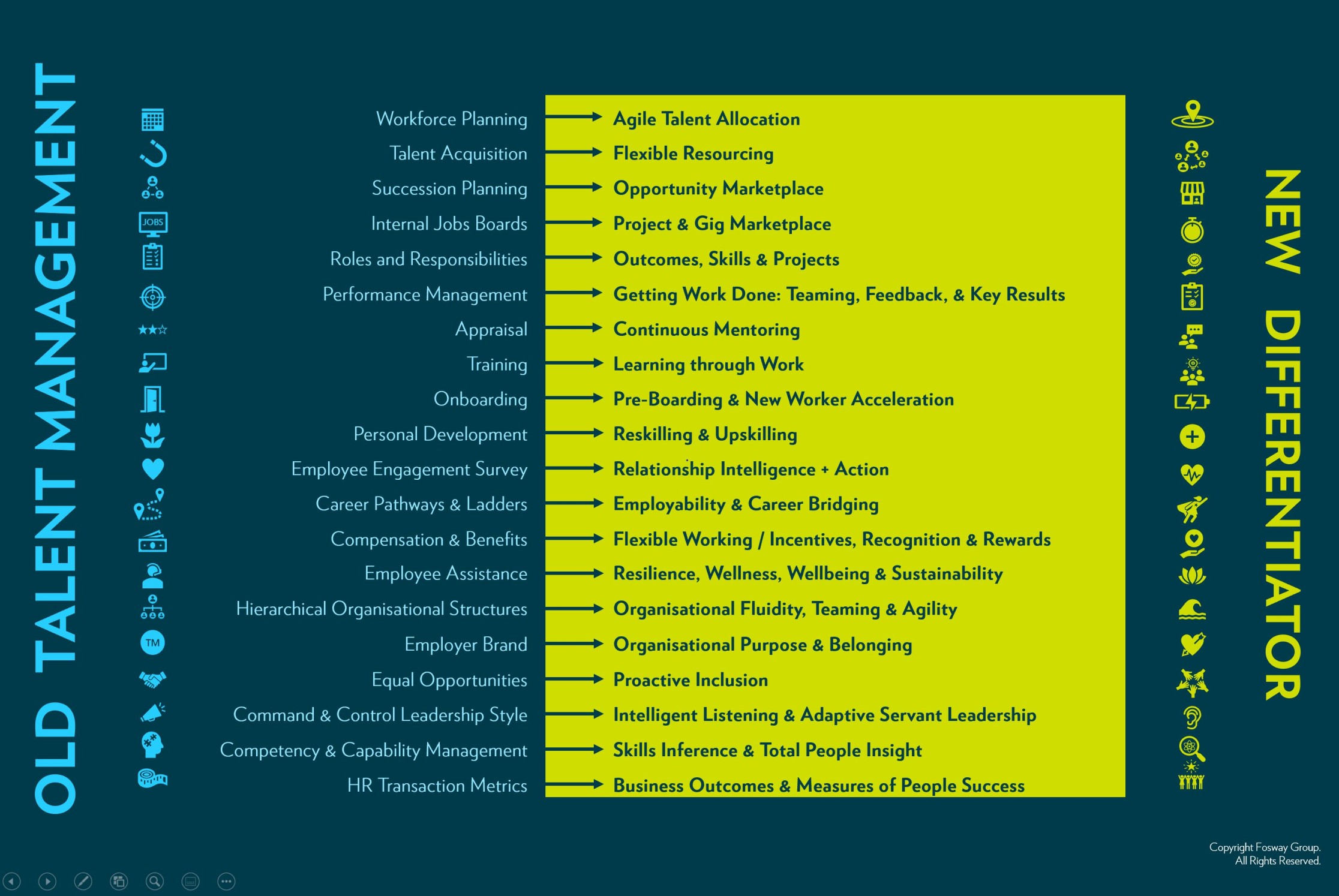News
Accelerating your business through talent

Why agility, resilience and fluidity are the new game
Accelerating your business through talent
Why agility, resilience and fluidity are the new game
Why agility, resilience and fluidity are the new game
We all know that our people are at the core of our business – without them, well, we can’t exist. And we certainly can’t grow. In recent years the business lens has shifted from seeing our people as legitimate ‘human resources’ to real people. People with wants and needs, desires and feelings. People with real and growing expectations from their employers.
Combine that shift in employee sentiment with highly changeable business landscapes, complex globalisation challenges and a whole haberdashery of change such as AI, skills gaps and automation, and our people shift from being a resource our businesses take from, to an asset we need to care for, if we are to keep it. Suddenly, our employees have become the talent we need to retain, retrain and nurture. Suddenly they are no longer disposable resources, but assets we must protect, provide for and ultimately invest further in.
In these tumultuous times, never has the need to provide for your people AND your business in resourceful, dynamic ways been more pertinent. But what does this mean for L&D?
Moving to a marketplace of talent
We were recently inspired by this article written by David Perring from Fosway Group, where he discusses the undeniable shift in ‘talent management’ within business, highlighting a clear need for continuous engagement, agility and an emphasis on creating marketplaces of opportunities for the business and its functions. He suggests that we need to move and make some critical shifts in the way we source, support and retain talent should business continue to survive. And we couldn’t agree more.
Below is Fosway’s suggested shifts from old talent management approaches to new ways of working; you’ll see how much emphasis is put on the employee experience, but with the understanding of how this change has the potential to positively impact the business.

Naturally, we were rather interested in the ‘Project and Gig Marketplace’ which David highlighted. We’ve spoken at length here at Jam Pan for the need for L&D to shift and adapt to changeable business demands – and have a more flexible workforce model as a consequence.
Some have already started making the move: we’re seeing first-hand many businesses seeking to temporarily source top-end talent for specific projects rather than putting them permanently on payroll. But many others have not.
So, why have some made the shift
At face value, using freelancers and gig workers may well just appear to be a cost-saving exercise for the business, which it indeed can be. However by tapping into talent as and when needed, we’re seeing L&D functions become more diverse, capable and dynamic as a result, often injecting new skills into their team from outside the industry which adds an additional dimension to projects too.
The result is that the business is able to flex and shift to changing needs without the overheads, but can also better adapt to ongoing and differing requirements whilst also tapping into the best available talent at the time. That means that not only are you able to harness specific and niche skills in-house when you need them, you’re also able to get the most skilled and talented individuals on the market. It really is a win/win.
Changing the ways we do business
Much to David’s point, should businesses have a desire to evolve away from historical ways of managing their people and talent, then they must address how their current processes work. He says:
“Organisations are adopting new people-centred approaches that are a better fit for the modern world. They are centred on creating more agile, more fluid and more ‘halocratic’ and adaptive organisations.”
And in order for us to truly become more fluid and agile, we must be more flexible in our approach to our workforce. This goes beyond allowing remote working and shifting office hours; this means being comfortable with sourcing skills when you need them. This means understanding that some skills are so specific, that actually why would you want them in-house all the time?
It’s true, the gig economy is growing; Nasdaq estimated that 43% of the US workforce would be freelance by 2020. As employees sacrifice structured benefits such as holiday pay for flexible working, day rates and working from home, so too can businesses reap the benefits of this dynamic, sophisticated and high-performing talent.
We’re already helping loads of clients make the transition to a more agile workforce. This shift, in turn, is providing them with more flexibility, more L&D budget and so much more opportunity to deliver innovative, forward-thinking projects as they harness top talent from across the globe as and when needed.
Fancy seeing how a freelancer could help you? Get in touch today to learn how we can help.
Latest events and news
Straight to your inbox
Be the first to know the latest news and insights about the world of L&D by signing up to our newsletter.

